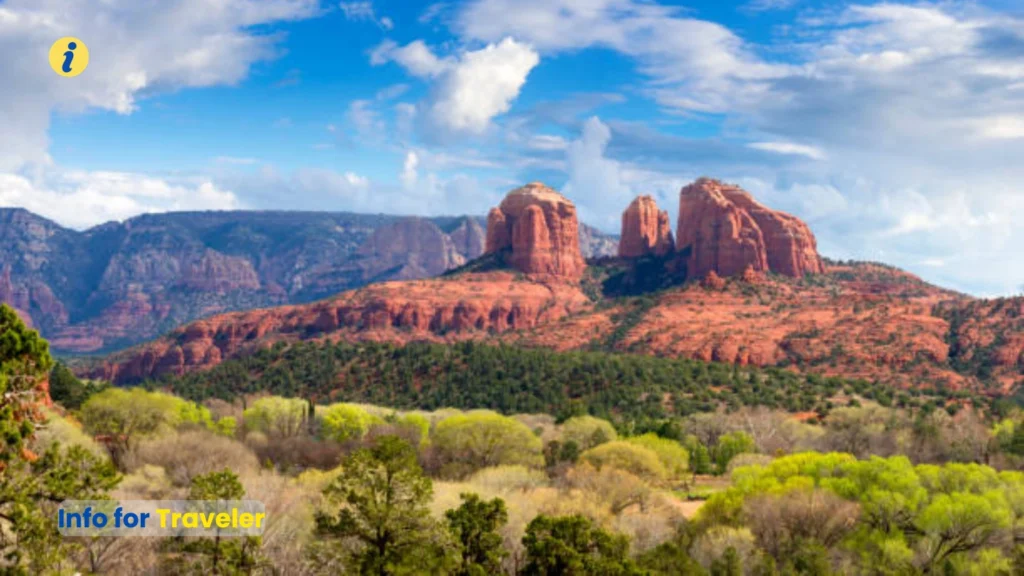Sedona hiking is one of the most rewarding outdoor adventures in Arizona, United States. The city’s red rock cliffs, striking rock shapes, and colorful desert plants create stunning views at every turn.
Trails here suit all skill levels, from easy walks to challenging climbs. You can enjoy peaceful forest paths, scenic lookouts, and even routes that pass hidden waterfalls. It’s no surprise visitors from around the world come to explore these famous trails.
If it’s your first time, Sedona’s network of paths can feel overwhelming. This guide will show you how to navigate Sedona hiking trails, pick the right route, and find hikes with water features. You’ll also get insider tips, real-life hiking stories, and expert advice to help you plan the perfect trip.
1. Cathedral Rock
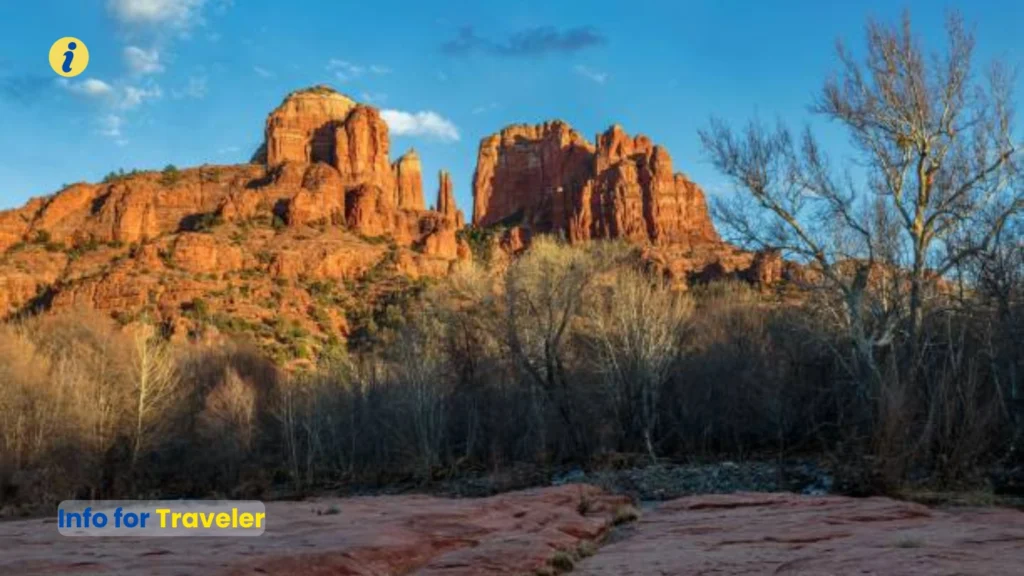
A steep red rock climb with stunning panoramic views.
Best for sunrise hikes and dramatic photography.
Cathedral Rock is one of the most iconic sights in Sedona, and climbing it is a bucket-list experience for many visitors. The trail is short but steep, leading you up through sandstone ledges that open to incredible views of the surrounding desert and valleys.
On clear mornings, the rising sun casts a warm glow on the red cliffs, creating a magical atmosphere for hikers and photographers. The rock formations here are uniquely shaped, giving the trail a rugged yet captivating feel.
At the top, you’ll find a breathtaking panoramic view of the Verde Valley and Oak Creek area, proof that the climb was worth every step. If you want to avoid crowds, arrive early and bring a good grip shoe for the steep sections.
2. Devil’s Bridge
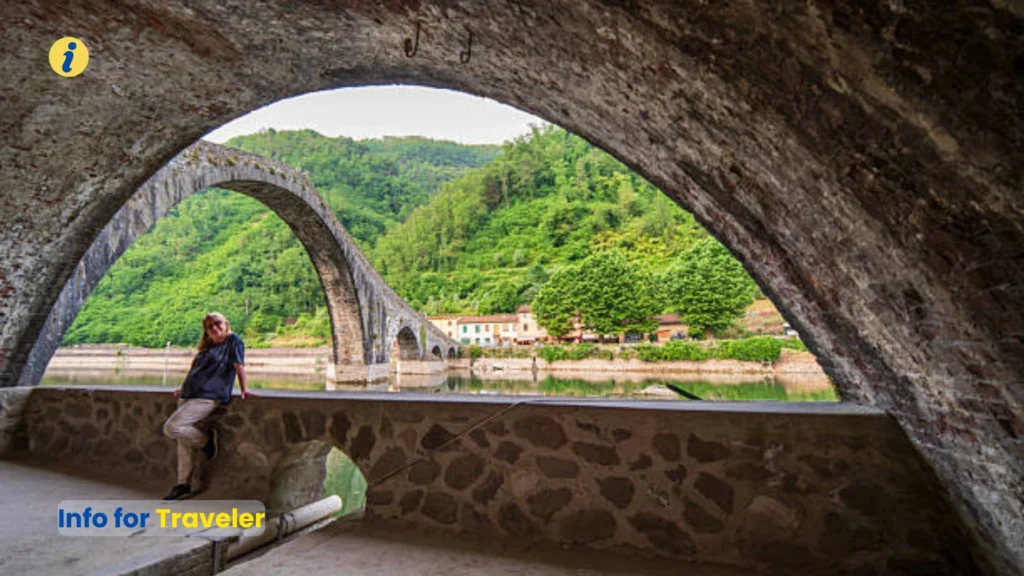
A natural sandstone arch high above the canyon floor.
Best for thrill-seekers and iconic photo spots.
Devil’s Bridge is perhaps the most famous of all Sedona hiking trails, and for good reason. This moderate hike starts on a dusty desert path lined with juniper and prickly pear cactus before leading you to a wide sandstone arch that spans the canyon.
Standing on the bridge offers a rush of excitement and unmatched views of the surrounding red rock country. The approach to the arch involves a short but steep climb, which can be challenging for some, but the reward is unforgettable.
Because it’s such a popular spot, the trail can get busy, especially during peak seasons in spring and fall. For the best experience, start at sunrise and bring a camera to capture the iconic shot from the bridge.
3. West Fork Trail
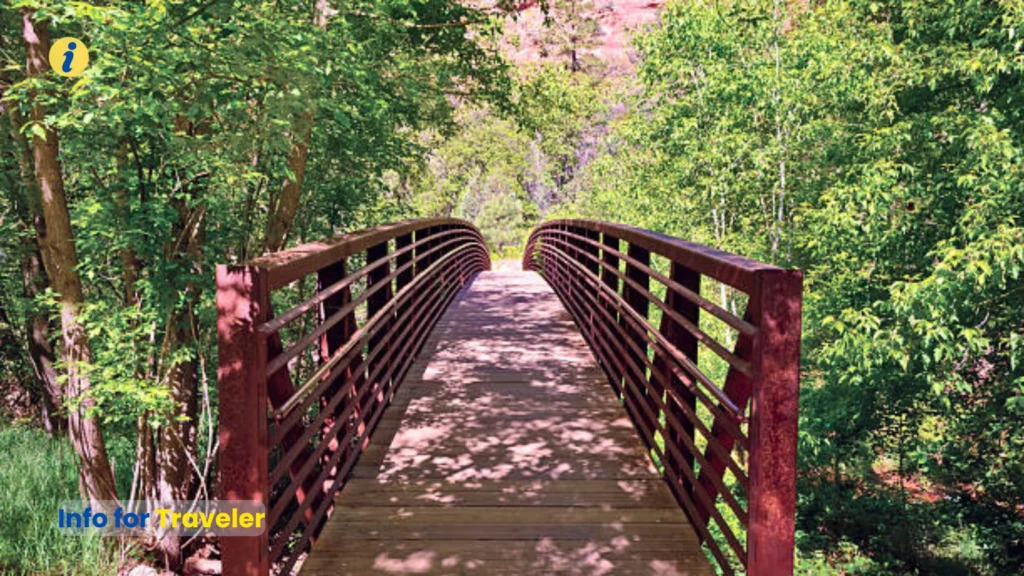
A shaded canyon walk alongside a flowing creek.
Best for cool summer hikes and fall colors.
The West Fork Trail offers a refreshing change from Sedona’s open desert trails. Following a gentle creek through a narrow canyon, it’s filled with shade from tall cottonwoods and ponderosa pines. This makes it one of the most comfortable hikes to enjoy in warmer months.
Along the way, you’ll cross the creek several times, stepping over smooth stones and walking past sheer rock walls that rise dramatically on either side. In autumn, the canyon bursts into shades of gold and orange, making it a favorite spot for leaf-peeping in Arizona.
The air feels cooler here, and the sound of water adds a peaceful rhythm to your hike. It’s a great choice for families, casual hikers, and anyone who wants to experience Sedona’s softer, more tranquil side.
4. Bell Rock
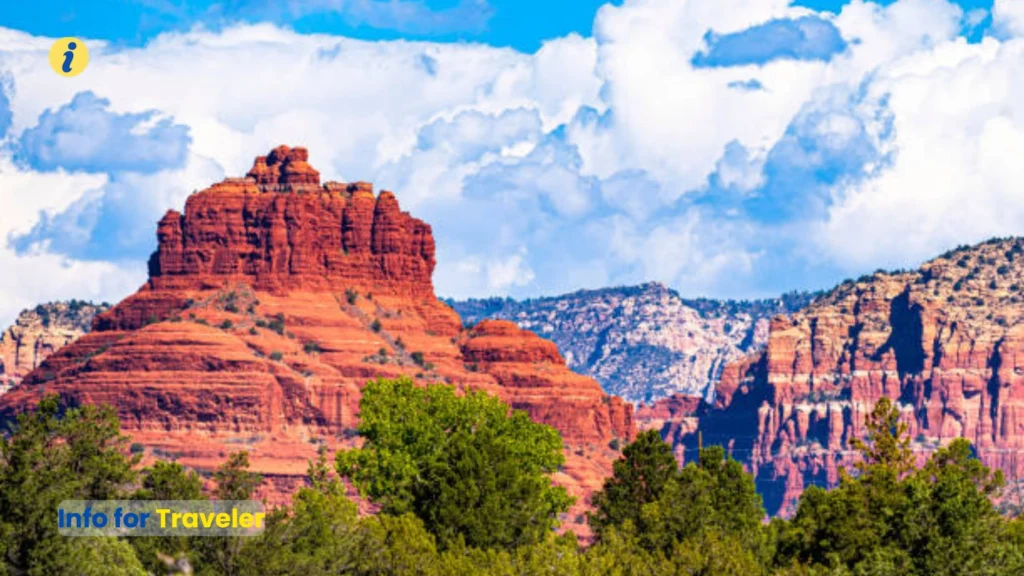
An easily recognized red rock butte south of Sedona.
Best for beginner-friendly hikes with great views.
Located just off Highway 179 between Sedona and the Village of Oak Creek, Bell Rock is one of the most photographed landmarks in Red Rock Country. The trail around it is relatively flat and easy, making it perfect for new hikers or those adjusting to Sedona’s elevation.
From the base, you can see Courthouse Butte to the east and the open desert stretching into the distance. The closer you get to the rock itself, the more you notice its layered sandstone patterns and the way light shifts across its surface throughout the day.
For those who want more of a challenge, there’s an optional scramble partway up the rock. This gives you an elevated view of Oak Creek Canyon and the surrounding mesas without committing to a strenuous climb.
5. Boynton Canyon
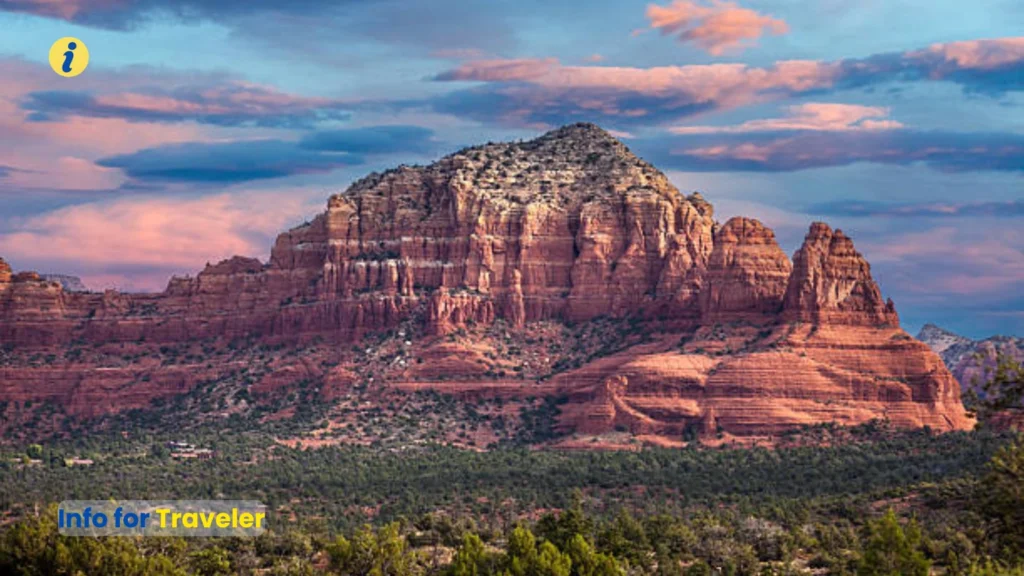
A red rock canyon hike with lush vegetation.
Best for scenic views and energy vortex seekers.
Boynton Canyon is a moderate trail west of Sedona that blends desert scenery with unexpected bursts of greenery. As you move deeper into the canyon, towering red cliffs rise on both sides, creating a dramatic backdrop.
Many visitors come here not only for the scenery but also for its reputation as one of Sedona’s famed “vortex” sites, a place believed to hold special energy. The peaceful atmosphere, combined with the canyon’s natural beauty, makes it a rejuvenating hike.
In spring, desert wildflowers dot the trail, while in autumn, the oaks and maples near the canyon’s end add splashes of color. The final section leads you to a viewpoint where you can see the canyon stretching far into Arizona’s high desert.
6. Doe Mountain
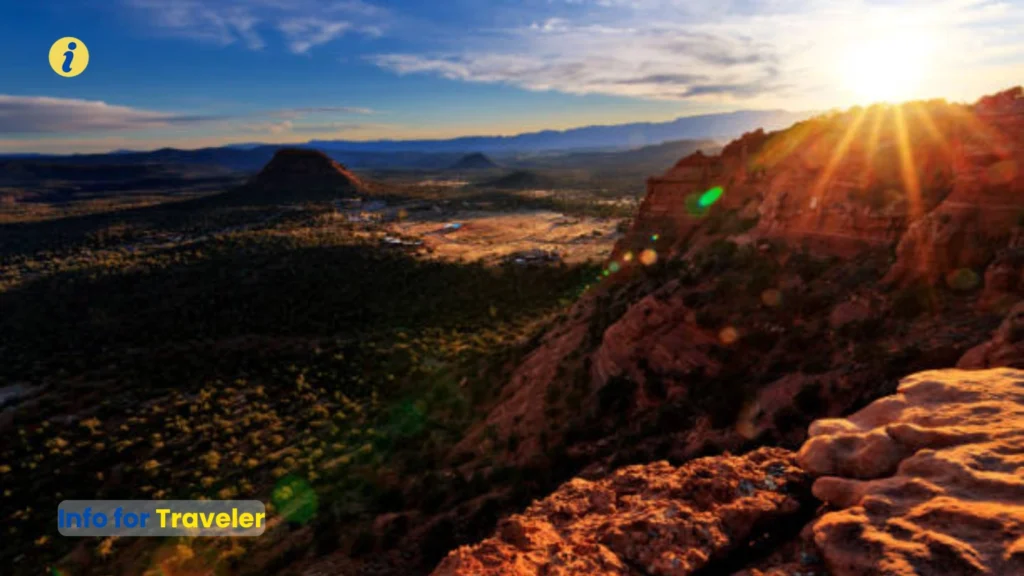
A short climb to a flat mesa with 360-degree views.
Best for sunset panoramas over Red Rock Country.
Doe Mountain may be short in distance, but it delivers big rewards. The trail ascends through switchbacks until you reach the top of a broad mesa. From here, you get a full panoramic view of Sedona’s red rock formations, the Verde Valley, and the distant Mingus Mountains.
The top is surprisingly flat, allowing you to wander and take in different perspectives of the surrounding landscape. Sunset is particularly stunning, as the red rocks glow and long shadows stretch across the desert floor.
Because it’s a relatively quick hike, Doe Mountain is an excellent choice if you want a memorable view without dedicating half a day to the trail.
7. Soldier Pass Trail
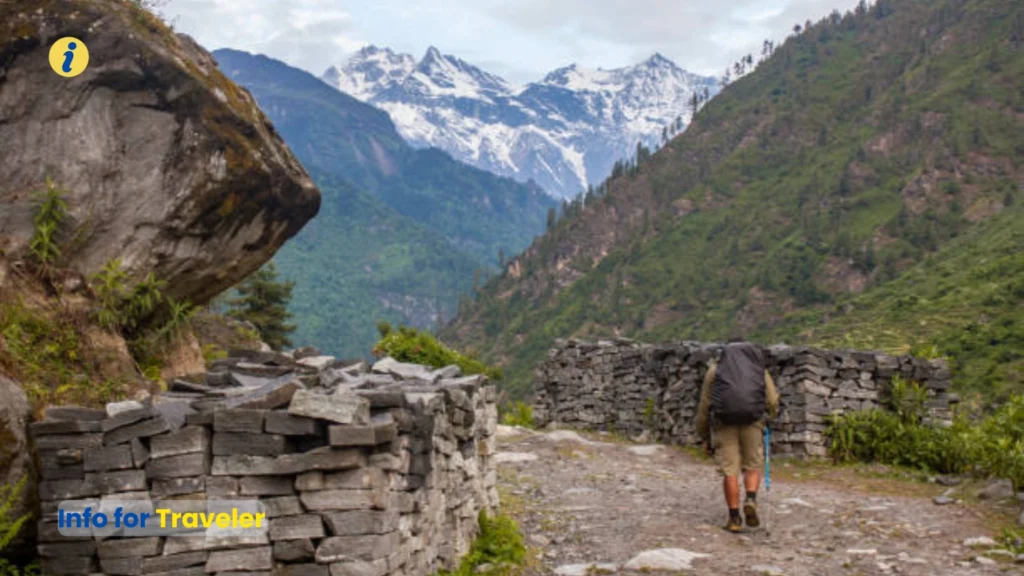
A diverse hike with caves, arches, and natural pools.
Best for adventurous hikers wanting variety in one trail.
Soldier Pass Trail offers a mix of Sedona’s most interesting natural features in just one route. Early in the hike, you’ll pass the “Seven Sacred Pools,” a series of small water-filled basins carved into the rock. Farther along, you can explore the Devil’s Kitchen Sinkhole, a massive collapse in the sandstone.
As you continue, the trail opens up to red rock views before leading toward hidden caves and rugged rock formations. It’s a moderately challenging hike with enough variety to keep every turn exciting.
Because of its central location in Sedona, Soldier Pass is popular, so arriving early helps avoid the busiest hours.
8. Fay Canyon

A short, shaded canyon walk ending with a view.
Best for a peaceful stroll away from crowds.
Fay Canyon is one of the easier Sedona hiking trails, making it a great choice for families or those looking for a gentle outing. The trail follows a sandy path between red rock walls, with partial shade from desert trees and shrubs.
At the end of the main path, you’ll find a viewpoint with a striking perspective of the surrounding cliffs. There’s also an unmarked spur trail that climbs to a natural arch, a worthwhile side trip if you’re feeling adventurous.
Fay Canyon feels more intimate than many Sedona trails, and its quiet setting makes it a refreshing break from the more crowded hotspots.
9. Bear Mountain
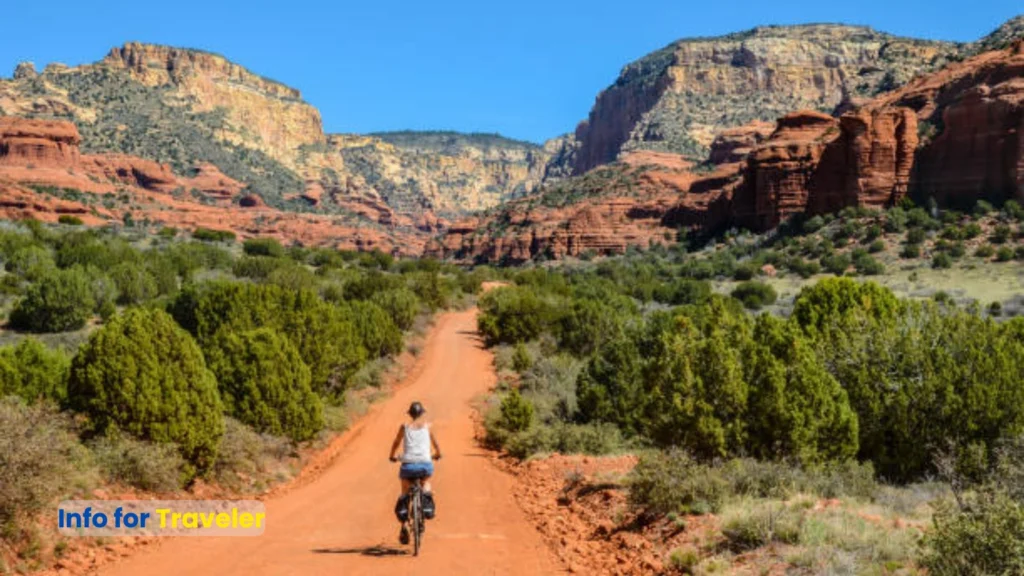
A steep, challenging climb with high desert views.
Best for experienced hikers seeking a workout and vistas.
Bear Mountain is one of Sedona’s toughest hikes, but it’s also one of the most rewarding. From the trailhead, the path climbs steeply through layers of sandstone, offering expanding views with every step.
The terrain is rugged and exposed, so it’s best tackled in cooler months or early in the day. From the summit, you can see far across Red Rock Country, the San Francisco Peaks near Flagstaff, and even into distant parts of the Verde Valley.
This trail demands good fitness, plenty of water, and careful pacing, but the sense of accomplishment at the top makes it a standout among Sedona’s hikes.
Best Hike in Sedona
The best hike in Sedona is Devil’s Bridge Trail. This popular route leads to the largest natural sandstone arch in the area. From the top, you get sweeping views of Sedona’s famous red rocks. It’s a trail that every visitor should try at least once.
The hike is 4.2 miles round trip and is moderate in difficulty. Most of the trail is easy to follow, but the last part is a short, steep climb. At the arch, you can carefully walk across for an unforgettable photo.
Devil’s Bridge is in the Coconino National Forest, only a short drive from Sedona’s main town. The best time to visit is in April or October, when the weather is cool and skies are clear. Parking fills quickly, so start early in the morning.
If you want one hike that shows Sedona at its best, this is it. Devil’s Bridge is more than just a trail, it’s the highlight of many travelers’ Sedona adventures.
Navigating with a Sedona Hiking Map
Use this Sedona hiking map to get familiar with the area before you start your adventure. It marks key trailheads, famous landmarks, and main access roads, making it easier to plan your trip in Red Rock Country. Whether your goal is Cathedral Rock, Devil’s Bridge, or West Fork Trail, the map shows exactly where each hike begins and how they connect.
You’ll also see popular hiking areas like Oak Creek Canyon, Boynton Canyon, and Slide Rock State Park. Major routes, including Arizona State Route 89A, are clearly shown so you can plan travel time between trails. Keep this map handy with our list of the nine best trails, and you’ll know where to start, how to get there, and what beautiful views to expect.
Sedona Hiking Adventure Case Studies
Every hiker’s journey in Sedona tells a different story. Some find their favorite spots after years of exploring, while others stumble into breathtaking moments by pure chance. Here are two real experiences, one from a local hiking discussion on Reddit and another from a personal travel story on Quora, that capture the magic, challenge, and beauty of Sedona hiking.
Case Study 1 – Finding Local Favorites
I came across this story on Reddit’s r/arizona community, where one hiker shared their go-to trails in Sedona. They weren’t talking like a tour guide, just casually telling others where they love to hike. Boynton Canyon, they said, is this serene, red-walled canyon where the light shifts all day, making the views feel new every time you glance up.
Then there’s West Fork Trail, which they swore gets really good after the three-mile mark, where the canyon narrows and the sound of the creek gets louder. But their real tip was about Sterling Pass. It’s not for the faint of heart, steep, rocky, and the kind of trail where your legs burn before you’re halfway up. Yet they loved it for that reason.
They said it made the view from the top feel truly earned, with the quiet of the wilderness as your reward. Reading their post felt like getting advice from a friend who’s been there, done that, and knows which hikes are worth every step.
Case Study 2 – A Solitary Trail Moment
This one came from a post on Quora, where a traveler talked about an unplanned hike in Sedona. They had a couple of hours to kill and decided to hit a nearby trail without expecting much. To their surprise, there wasn’t a soul around, just them, the wind, and the rustle of leaves in the distance.
They described stopping for a moment to take in a panoramic view that stretched over the red rocks, dotted with spires and caves.
What made it memorable wasn’t just the scenery, though. It was the feeling of complete stillness, the kind you only get when the world around you slows down. They zoomed in with their camera, tracing the twists of the streams far below and the way the sunlight hit the cliffs. By the time they walked back, the quiet had settled in their mind as much as in the landscape.
They said it was one of the simplest but most peaceful hikes they’d ever taken and they hadn’t even planned it.
How to Prepare for Sedona Hiking?
Preparing for Sedona hiking starts with knowing the terrain, weather, and your trail choices. Sedona’s landscape is a mix of rocky paths, open desert, and shaded canyons. Each trail has its own challenges, so planning ahead ensures you enjoy your hike safely.
1. Know the Weather and Season
Sedona get hot in summer and chilly in winter mornings. Spring and fall offer the best conditions, with mild temperatures and clear skies. Always check the weather forecast before heading out. If it’s summer, plan to hike early to avoid heat.
2. Choose the Right Trail for Your Skill Level
Sedona has trails for every ability, from short, scenic walks like Cathedral Rock Trail to longer routes like Boynton Canyon. Study a Sedona hiking map before you go. It will help you pick a trail that matches your fitness and time.
3. Wear Proper Footwear and Clothing
Trails here can be rocky, so sturdy hiking shoes with good grip are essential. Lightweight, breathable clothing works best. In cooler months, bring layers for the changing temperatures.
4. Stay Hydrated and Fueled
Sedona’s dry desert climate can dehydrate you quickly. Carry enough water for your entire hike. Pack easy snacks like trail mix, granola bars, or fruit to keep your energy up.
5. Protect Yourself from the Sun
Even in cooler seasons, Sedona’s sun is strong. Bring sunscreen, sunglasses, and a hat. Most trails have little shade, so sun protection is key.
6. Learn Trail Etiquette and Safety
Stay on marked paths to protect Sedona’s delicate environment. Be mindful of others, uphill hikers have the right of way. Watch for loose rocks, and never attempt risky climbs without experience.
7. Plan for Parking and Permits
Popular trailheads like Devil’s Bridge fill up early. Arrive before sunrise or use the Sedona Shuttle if available. Some trails require a Red Rock Pass for parking, which you can buy at kiosks or visitor centers.
Bottom line: Preparing well for Sedona hiking means knowing the conditions, choosing the right trail, and bringing the right gear. With planning, you’ll be ready to enjoy the red rock beauty and make the most of your adventure.
Pro Checklist: Must-Haves for Sedona Hiking
Going on a Sedona hiking trip is exciting, but the desert can be tough if you’re not prepared. The sun is strong, the air is dry, and the trails can be rocky. Having the right gear makes your hike safer, easier, and a lot more fun.
| Category | Items | Why You Need It |
| Water Supply | 2–3 liters per person (hydration bladder or bottles) | The desert heat can dehydrate you fast. |
| Sun Protection | Wide-brim hat or cap, SPF 30+ sunscreen, UV sunglasses | The sun and red rock glare are intense. |
| Navigation Tools | Paper Sedona hiking map, GPS or phone with offline maps | Some trails have no cell service. |
| Footwear & Clothing | Hiking boots/trail shoes, moisture-wicking socks, light layers | Keeps you comfortable and prevents blisters. |
| Safety Gear | First-aid kit, whistle, multi-tool or knife | Helps in case of emergencies. |
| Food & Energy | Snacks like nuts, bars, electrolyte packets | Keeps your energy up. |
| Weather Prep | Light rain jacket, bandana or buff | For sudden rain or dust. |
| Comfort & Extras | Trekking poles, small backpack, camera or power bank | Makes hiking easier and helps capture moments. |
| Leave No Trace | Small trash bag, biodegradable wipes | Keeps nature clean for everyone. |
If you bring these essentials, you’ll be ready for whatever Sedona’s trails throw at you. Pack light, stay safe, and enjoy the views.
Conclusion: Your Complete Sedona Hiking Guide
Sedona hiking is one of the best ways to explore Arizona’s beauty. The trails take you through red rock cliffs, peaceful canyons, and even to hidden waterfalls. In this guide, we looked at nine of the top hikes, shared real stories from hikers, and gave tips to help you plan the perfect trip.
You now know what to pack from our Pro Checklist, how to use a Sedona hiking map, and which Sedona hiking trails fit your style, whether you want a short walk or a challenging climb. Each trail offers something special, from wide desert views to cool, shady paths.
No matter how long you stay, Sedona’s bright rocks, warm sun, and fresh desert air will stay with you. Come prepared, take care of the land, and you’ll understand why hikers from around the world love it here.
If you liked this in-depth breakthrough on Sedona Hiking trails, you should check out this writing, 7 Best Hiking Places in Nashville | Complete Plan & Guide
Frequently Asked Questions about Sedona Hiking
What is the most famous hike in Sedona, Arizona?
The most famous hike in Sedona is Devil’s Bridge Trail. It’s known for its giant natural sandstone arch and sweeping red rock views you can see only in Sedona, Arizona.
When is the best month to hike in Sedona?
The best time to hike in Sedona is April or October. These months have mild desert temperatures and fewer tourists, perfect for exploring Sedona hiking trails.
How long are most Sedona hiking trails?
Sedona hikes can be as short as 0.8 miles or as long as 12 miles. Shorter hikes are great for beginners, while longer ones take you deep into Sedona’s red rock wilderness.
Why is Sedona, AZ, so famous for hiking?
Sedona is famous for its red rock formations, spiritual vortex sites, and some of the most scenic hiking trails in the American Southwest.
Are there Sedona hiking trails with waterfalls?
Yes. Trails like West Fork Trail in Oak Creek Canyon have streams and seasonal waterfalls, offering a refreshing change from the desert landscape.
What are the best hikes in Sedona with water?
For water views in Sedona, try West Fork Trail, Oak Creek Canyon, or Huckaby Trail. These trails follow creeks and offer shaded sections.
Do I need a map for hiking in Sedona?
Yes. A Sedona hiking map helps you find trail intersections, track elevation, and locate water sources, especially if you’re new to the area.
Can I hike in Sedona all year round?
Yes, Sedona hiking is possible year-round. In summer, start early to avoid the heat; in winter, mornings can be cold but afternoons are pleasant.

